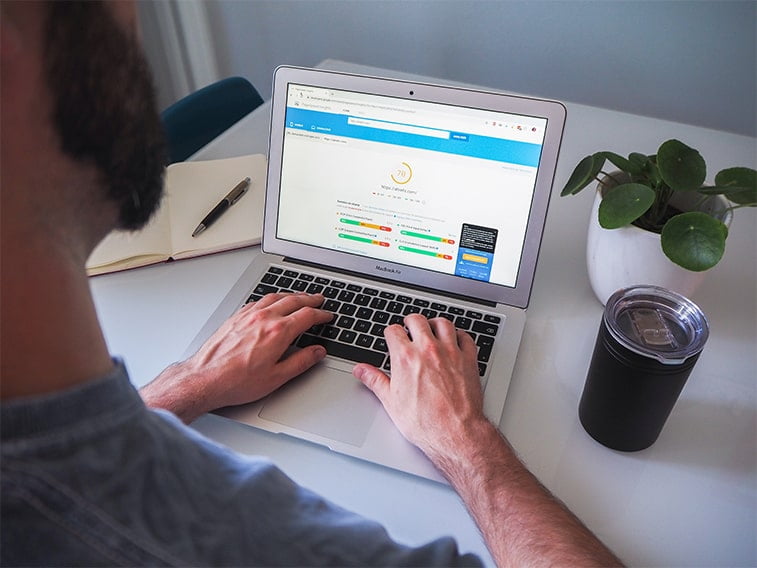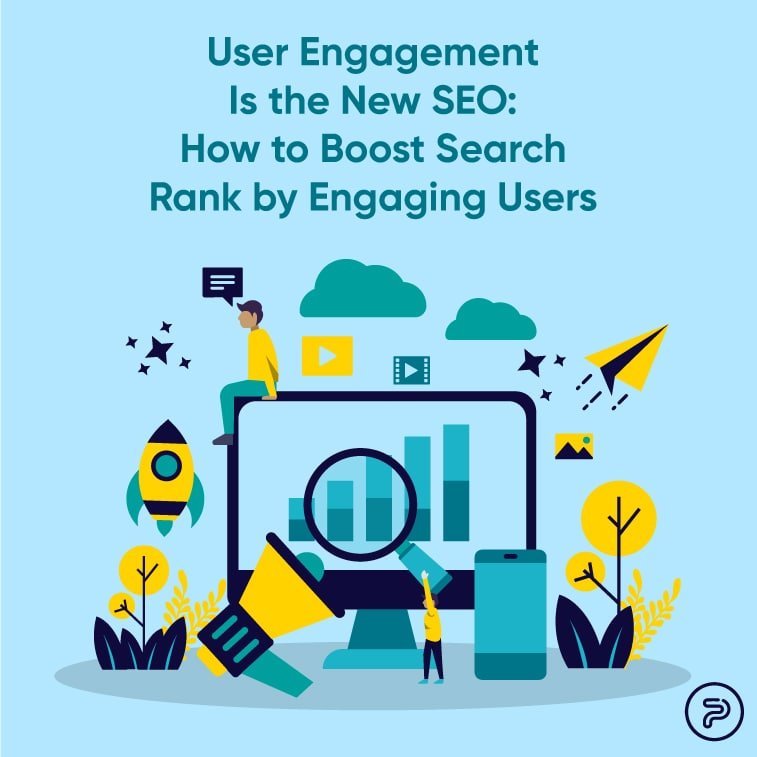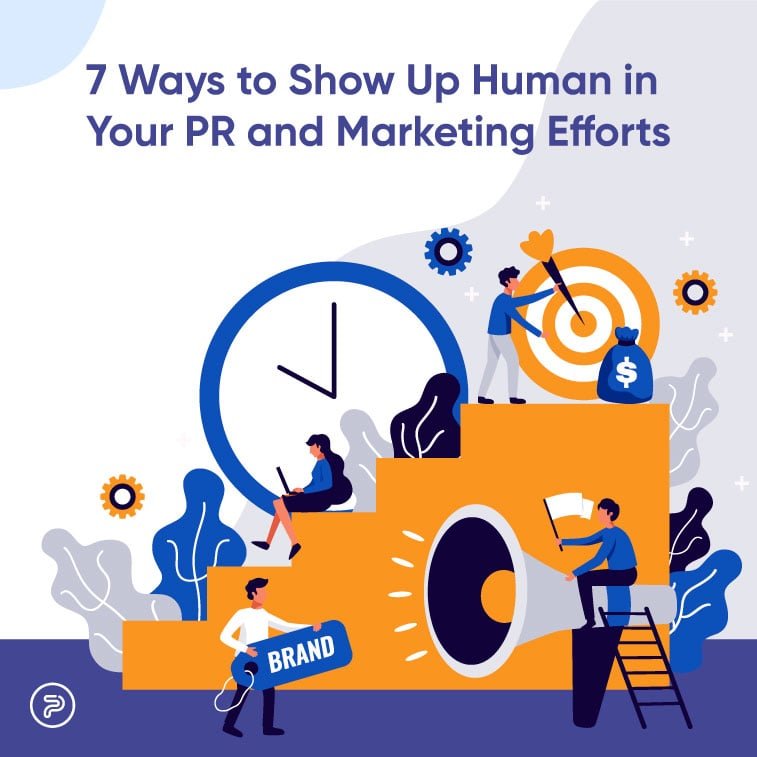Take any successful digital marketing strategy under the sun and when you will see, that when you peel off all the individual parts that define the business or/and brand at hand, there are several vital parts to every strategy crucial for every business to remain afloat in the vast digital ocean. One of these important aspects is user engagement and SEO.
The only problem is, SEO is a moving target, with several algorithm changes, smaller and larger shifts each year. This means that SEO experts and digital businesses alike must adapt and overcome every new change and challenge.
This isn’t always that easy. If you’ve been following the trends carefully, you may remember the time when Google’s addition of featured snippets managed to disrupt the numbered search page ranking system. The snippet initial goal was to answer a specific question from a strong content piece, it might pull the answer from the second, or even the fourth or fifth website on page number one, instead of offering the first (if the content wasn’t good enough on it, that is). The results were staggering: almost more than one-third (34%) of desktop users didn’t even bother to click on the first website because was already answered by reading the snippet on the search results page. Back then, this may have seemed like a cheap traffic-hoarding step, however, it’s not that. It’s prioritizing searcher’s experience over web page hierarchy to ensure that users are satisfied with the search engine itself.
That being said, SEO should be also treated a bit differently. Instead of looking only at the traditional ranking metrics, new trends and the algorithm changes in the past decade all indicate that a totally new SEO trend is on the rise, to meet rising user expectations.
In this article, we will try to shed as much light on what’s about to come as possible and give you some tips about how to improve user experience along with engagement to improve your traffic and rankings at the same time.
Search Engine Engagement is the Name of the Game
Before getting started with listing the engagement metrics that will ultimately connect to increasing your rankings, it’s important for you to know that every search engine is its own little mystery. While it’s true, Google does notify the general public when it rolls out a core algorithm update, however, it’s pretty secretive about proprietary info and details. That being said, it’s almost impossible to say for sure what works and what doesn’t however, there are a few engagement metrics thatseemto be valued quite fondly by search engines.
Engagement Metrics
- Mobile Optimization: If you remember, Google made an announcement back in 2015 that mobile optimization would become one of the cornerstones of ranking high, as mobile devices gained more and more ground as search-conducting devices. Ever since then, Google recommends a highly responsive web layout that works equally smooth on all devices. With a responsive design, you can also manage to land a place in Google’s ?local pack? which used to be comprised of 7 featured business, however, it got reduced to three to adapt to a more mobile-friendly layout.
- Semantic Search:We’ve already touched base on the fact that Google managed to change its algorithm drastically especially compared to the golden days of SEO. The first major change allowed the search engine to judge both the use of keywords and the ways in which they were used. This meant that now phrases and keywords needed to appear naturally not just stacked on top of each other, making for terrible page readability. If Google detected something like that, it would penalize the page’s ranking. After the famous 2013 Hummingbird update, the algorithm also takes overall meaning into consideration when hooking you up with the best search results. Thanks to this update, Google could finally do more than just scan keywords. For example, if you wanted to know what’s the fastest animal, your search parameters and the page would both had to include ?fastest animal? to give you a satisfying answer. After Hummingbird, Google became smart enough to use semantic search and compare search intent with page content to list the most appropriate results and to improve the search experience. Most recently, the search engine rolled out BERT, which prioritizes question-searches and compares search intent by analyzing how words relate contextually to each other. This will probably an even bigger aid in the future, as voice search is still gaining popularity.
- Dwell Time:This is the metric that measures how long people spend on the pages listed in the search results before navigating back to the search engine itself. Engines use this metric the judge page relevance to a user’s query. Simply put, if the user stays on the web page long enough before going back for another search, then that page is likely better quality and more valuable than the rest. Most browsers (like Google Chrome) know exactly how long visitors remain on pages. In this sense, Dwell time is a very important metric as it indicates quality and relevancy prompting web designers to create more immersive and inviting designs so visitors stay on the websites for as long as possible. To biggest problem is that only search engines have access to dwell time. Fortunately, you can always use other metrics to measure engagement on your website. Bounce rate, time on page, and conversions from landing pages can always give you a good idea of what value your users get from visiting your website and give you insight into their experiences.

What Strategies to Use to Boost User Engagement and SEO Along With Your Rankings?
Now, that you know about the main metrics, it’s time to map out a few strategies that will help boost your traffic. In all honesty, it’s easy to see a connection between great user interfaces and high rankings, but making them actually happen is an entirely different story.
That being said, let’s take a look at a few UX SEO practices that can help you.
AR or Augmented Reality
Remember how Sephora released the Visual Artist app update in 2017? It enabled users to try on eyeshadows, lipstick, and other cosmetic products virtually from the comfort of their rooms, without having to walk into the store. This little tweak focusing on user experience managed to generate organic revenue growth of 14%.
As augmented reality features are getting more and more accessible even to smaller businesses with tighter budgets, website and app features are getting more and more immersive and sophisticated. In the case of eyeglass retail sites, such an AR functionality can boost user engagement significantly.
Both augmented reality and virtual reality have a lot to offer when it comes to boosting user experience and overall engagement and since they are only in their infancy, we can expect even more dramatic changes in the way people engage with online content in the future.
Interactive Tools
On paper increasing engagement isn’t rocket science. It’s just finding simple ways to capture the attention of your visitors. It’s easier said than done, however. a few interactive activities and tools can be incredibly effective to occupy the user’s time and provide value at the same time.
Now, when we say interactive tools you shouldn’t immediately think about the latest online gadgets and tech. It can also be something simple and useful like a mortgage cost calculator or a really responsive chatbot. It can also be something so simple as a handy survey feature. For instance, people love great online quizzes and as long as you make it useful to the user and ensure that it provides fun, it will grant you with a tangible boost in your engagement metrics.
On the other hand, brands that sell products can often offer tools that enable visitors to customize the products to their liking. If you’ve ever visited a website of a musical instruments manufacturer, you’ve probably come across several ?guitar builder? features that let users build their dream six-string online. The baldest sites even let users order their creation.
As you can see, these are simple features, that when done the right way, can also go a long way.
Video Content
Oftentimes, digital marketers and site owners are under the assumption that having a video content-heavy site will only slow down pages and load time in general leaving a huge increase in bounce rates. While, this concern is ultimately valid, with a solidly built site, it shouldn’t be that much of a problem and it’s well worth the risk. Video makes processing info easier and makes the entire visit more immersive, leading to staying more than double the time on the site that they’d otherwise spend on average. Well-placed video content can boost dwell time along with rankings. Product reviews, ?how-to? videos, and other similar content can be fun to watch and highly educational at the same time helping you improve your site’s SEO status along the way. On the other hand, if you also enable commenting on the video, you can gain valuable insight regarding how well-received your video content is, and might even give you hints on what your audience wants to see in the future.

Use Lead Magnets
Sometimes, like in the case of interactive tools, you don’t have to reinvent the wheel to boost site engagement, increase user experience, and improve your SEO stats as well. For instance, lead magnets with gated content have been around for a while now and have become a staple in the toolshed of digital marketers who specialize in lead generation. If you manage to push lead magnets that hold value to your audiences and guide them to even more high-quality content, you can harness their power and improve your metrics.
After all, Google prioritizes user-friendly web pages that provide valuable content resources. With lead magnets leading to quality content, you optimize and prioritize conversions at the same time.
Free proposal samples and quizzes in exchange for voluntarily given email addresses aren’t necessarily new, however, they can boost traffic and can increase dwell time, along with user engagement. Spreadsheets, generators, calculators, and tutorials can do the trick too ? just makes sure you offer them for free.
Engage and Optimize
As you can see, a lot of these things aren’t necessarily new under the sun but have been given, so to speak, new meaning as user engagement started to affect SEO.
So, keep your content high-quality and meaningful, with focusing on value for your visitors and you will rank better on Google, not to mention, you will also be able to keep your visitors happier.
Augmented reality, videos, lead magnets, and interactive tools all provide an abundance of different possibilities and can create your entire digital strategy a creative journey that will make a huge difference to your site’s UX and search engine optimization efforts.





